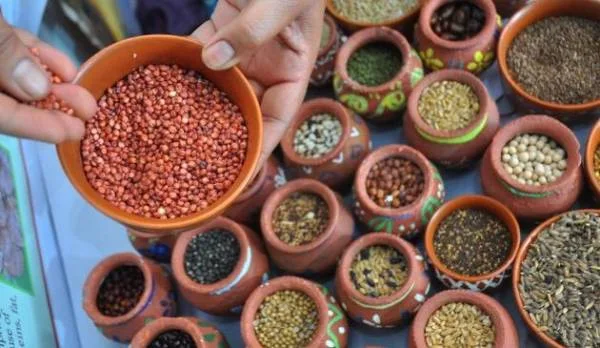The U.N. Food and Agriculture Organization is endorsing India’s proposal to declare 2023 as the International Year of Millets. Millet, a grain mainly grown and consumed in developing countries until recently and once considered a poor man’s staple, is quickly becoming a favorite globally among those affected by climate change because of its ability to thrive in harsh and arid environments. Its drought-resistant quality makes it attractive as many parts of the world begin to experience a water supply shortage.
Organizations like the International Crop Research Institute for Semi-Arid Tropics (ICRISAT), are investing in and developing a strand of pearl millet with greater resistance to drought and disease to address climate change and the myriad of new challenges it is presenting. Funding for this project is ensured until 2020 in partnership with The Crop Wild Relative Project, a global organization that collects and conserves the wild relatives of 29 cultivated crops to ensure future crop diversity, and Crop Trust, an international organization dedicated solely to conserving crop diversity.
In addition to millet’s attractive growth characteristics, it is one of the most nutritious and anti-allergenic grains available. Millet is gluten-free, making it an excellent choice for the millions of people around the world who suffer from Celiac disease or have a gluten sensitivity. It is high in B vitamins, calcium, iron, potassium, zinc, magnesium, and fats. And it’s an excellent source of protein and dietary fiber. Millet production is projected to sharply increase due to its many health benefits and ability to grow in a variety of climates. At a recent planning meeting to address high levels of malnutrition across India and Africa that included ICRISAT and 50 scientists from public, private, and national systems, Dr. Wolfgang Pfeiffer, Global Director of Product Development and Commercialization for Harvest Plus, asked, “Could high-iron pearl millet be the next superfood in India—the next ‘quinoa’ for the westernized markets?”
Now that 97 percent of actively publishing climate scientists agree climate change is real, countries and organizations are beginning to take more meaningful steps to ensure their food supply can withstand the changing environment. Millets can play a key role in achieving that objective, and it is hoped that by declaring 2023 as the International Year of Millets, more attention will be paid to this important grain.
Tags: 2023 Will Be The International Year Of Millets India
Organizations like the International Crop Research Institute for Semi-Arid Tropics (ICRISAT), are investing in and developing a strand of pearl millet with greater resistance to drought and disease to address climate change and the myriad of new challenges it is presenting. Funding for this project is ensured until 2020 in partnership with The Crop Wild Relative Project, a global organization that collects and conserves the wild relatives of 29 cultivated crops to ensure future crop diversity, and Crop Trust, an international organization dedicated solely to conserving crop diversity.
In addition to millet’s attractive growth characteristics, it is one of the most nutritious and anti-allergenic grains available. Millet is gluten-free, making it an excellent choice for the millions of people around the world who suffer from Celiac disease or have a gluten sensitivity. It is high in B vitamins, calcium, iron, potassium, zinc, magnesium, and fats. And it’s an excellent source of protein and dietary fiber. Millet production is projected to sharply increase due to its many health benefits and ability to grow in a variety of climates. At a recent planning meeting to address high levels of malnutrition across India and Africa that included ICRISAT and 50 scientists from public, private, and national systems, Dr. Wolfgang Pfeiffer, Global Director of Product Development and Commercialization for Harvest Plus, asked, “Could high-iron pearl millet be the next superfood in India—the next ‘quinoa’ for the westernized markets?”
 |
| 2023 Will Be The International Year Of Millets India’s Proposal |
Now that 97 percent of actively publishing climate scientists agree climate change is real, countries and organizations are beginning to take more meaningful steps to ensure their food supply can withstand the changing environment. Millets can play a key role in achieving that objective, and it is hoped that by declaring 2023 as the International Year of Millets, more attention will be paid to this important grain.




















